Gaming on Windows 11 brings with it a wave of excitement and anticipation for what’s possible. By laying out the optimal system requirements and exploring the suite of features Windows 11 offers, this article aims to arm gamers with the knowledge needed to fully capitalize on their gaming experience. From hardware compatibility to performance benchmarks, the focus is squarely on maximizing what your PC can do in the gaming realm.
System Requirements and Optimization
Optimal System Requirements for Gaming on Windows 11
Windows 11 is the latest operating system from Microsoft, designed to offer a smooth and immersive gaming experience. To get the most out of gaming on Windows 11, your PC should meet certain system requirements. Here’s a deep dive into the optimal specifications needed to ensure a superior gaming experience on this platform.
Central Processing Unit (CPU)
: At the core of any gaming setup is the CPU. For Windows 11, an Intel 8th Generation or AMD Ryzen 3000 series processor is recommended. These processors are built to handle complex gaming algorithms and provide a seamless gaming performance without any lag.Graphics Processing Unit (GPU)
: The GPU is crucial for rendering high-quality graphics in games. For an optimal experience on Windows 11, a DirectX 12 compatible graphics card with a WDDM 2.0 driver is recommended. NVIDIA RTX 20 series or AMD Radeon RX 5700 series cards are ideal choices offering robust performance for high-resolution gaming.Random Access Memory (RAM)
: RAM plays a significant role in how quickly your system can access and use data. For gaming on Windows 11, having at least 16GB of RAM is optimal. This ensures that games run smoothly, even with high-resolution textures and complex game mechanics.Storage
: Solid-state drives (SSDs) are preferred for gaming due to their quick read and write speeds. A 512GB NVMe SSD is recommended for Windows 11, providing ample storage for games and ensuring fast loading times. SSDs significantly reduce the time spent on loading screens, enhancing the overall gaming experience.Display
: A quality display is key to enjoying the visuals of modern games. For Windows 11, a monitor that supports a 1080p resolution or higher is recommended. High refresh rate monitors, such as those offering 144Hz or more, provide smoother gameplay, which is particularly beneficial in fast-paced games.Internet Connection
: Many modern games require an internet connection for multiplayer features, updates, or content downloads. An ethernet connection or a Wi-Fi 6 enabled device is recommended for a stable and fast online gaming experience on Windows 11.By ensuring your PC meets these optimal system requirements, you can enjoy the rich, immersive gaming world that Windows 11 has to offer. Whether you’re exploring vast open worlds, competing in fast-paced online matches, or enjoying indie gems, these specifications will help provide a smooth and enjoyable gaming experience.
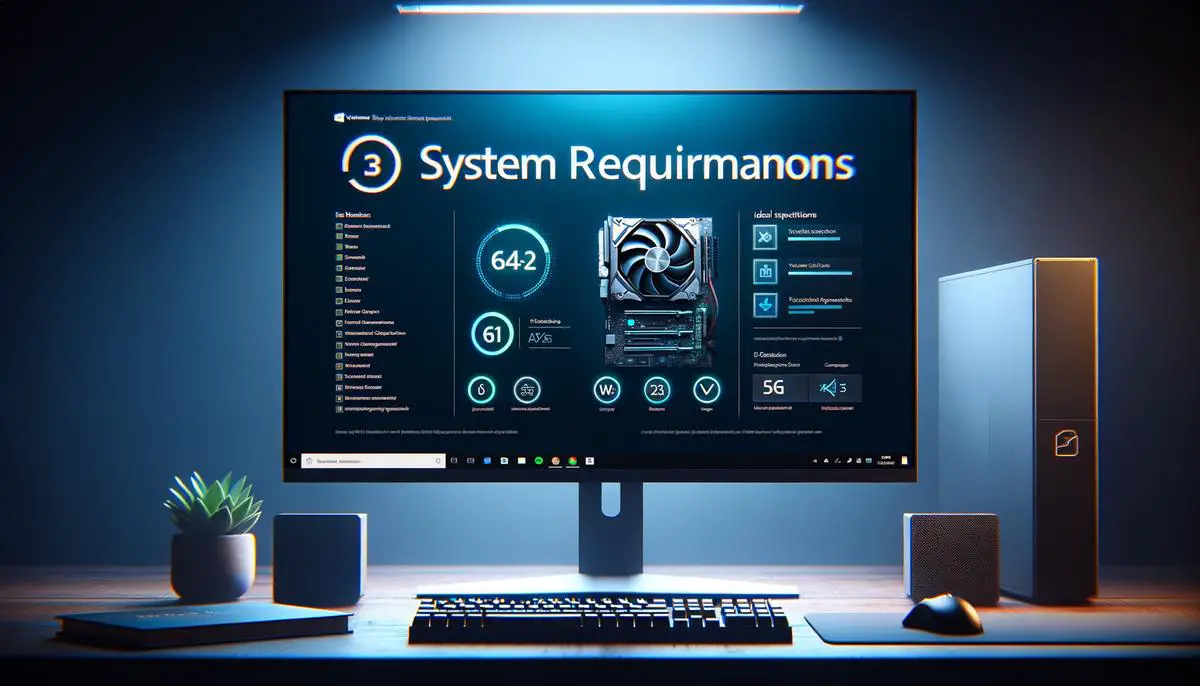
DirectX 12 Ultimate and Gaming Features
DirectX 12 Ultimate Takes Gaming on Windows 11 to the Next Level
Windows 11 boasts numerous features that elevate the gaming experience, one of which is DirectX 12 Ultimate. This advanced API (Application Programming Interface) is a game-changer for both developers and gamers, offering tools that significantly enhance graphics and overall game performance on compatible hardware.
DirectX Raytracing (DXR) 1.1 is one of DirectX 12 Ultimate’s standout features, bringing realistic lighting, reflections, and shadows to games. Unlike traditional rendering methods, DXR simulates the way light interacts with objects in the game environment, creating lifelike scenes. This upgraded version allows for more efficient resource utilization and streamlined raytracing capabilities, enabling games to run smoothly with these visually stunning effects.
Variable Rate Shading (VRS) is another pivotal advancement. It optimizes rendering performance by varying the shading rate for different areas of the game scene. Less attention is given to peripheral and less detailed elements, allowing the GPU to focus on the most essential aspects, such as characters or critical action points. This selective shading not only improves frame rates but also ensures that the graphical fidelity in focal areas is at its peak.
Mesh Shaders introduce a new approach to geometry processing, optimizing the workload of rendering complex scenes. By allowing developers to control how meshes—collections of vertices, edges, and faces that define the shape of 3D objects—are processed at a more granular level, Mesh Shaders can significantly reduce the strain on both the CPU and GPU. This leads to smoother performance and the ability to render more detailed and dynamic environments than ever before.
Lastly, Sampler Feedback is aimed at optimizing texture streaming, a critical component in modern games that ensures high-resolution textures are loaded efficiently without overburdening the system. This feature allows for more intelligent texture loading, making better use of available RAM and storage, leading to quicker load times and more detailed game worlds without the need for more powerful hardware.
DirectX 12 Ultimate’s integration into Windows 11 not only promises to push the boundaries of visual fidelity and game performance but also signals a unanimous stride towards a future where gamers can experience immersive and realistic environments without compromising on performance. This cutting-edge technology ensures that both game developers and players can harness the full potential of their hardware, elevating gaming on Windows 11 to unparalleled heights.
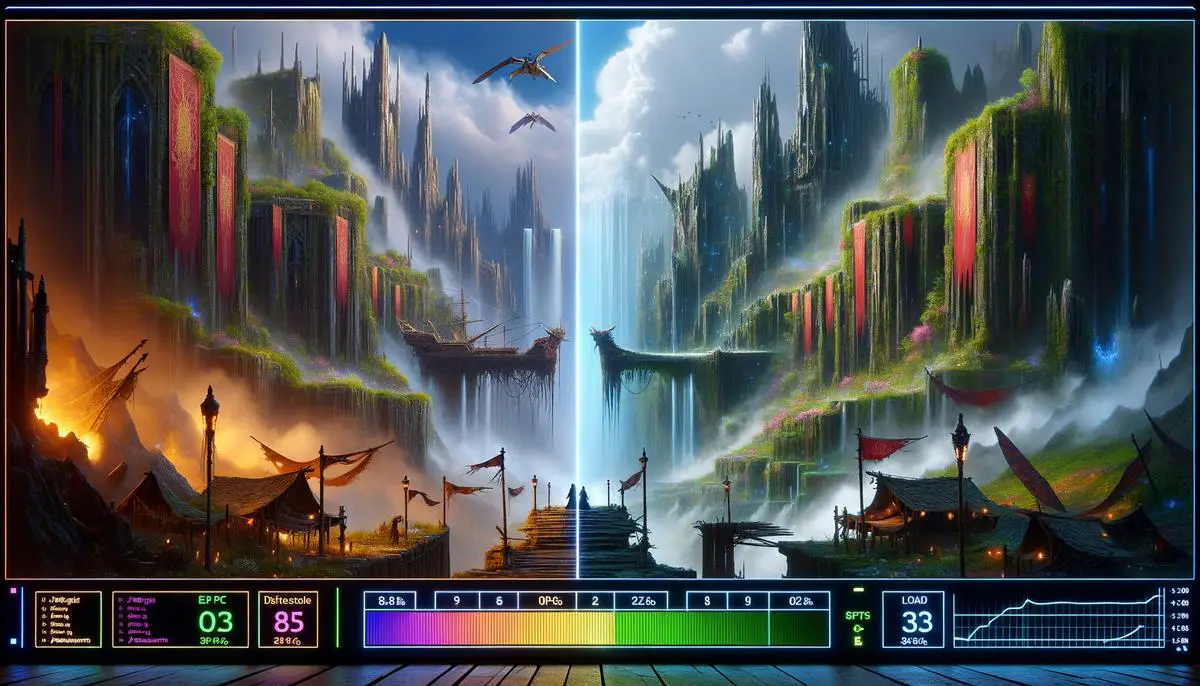
Compatibility with Gaming Hardware
Building on the robust foundation laid out by central components such as the CPU, GPU, RAM, storage options, and the crucial aspects of display and internet connection, Windows 11 compatibility with gaming hardware extends into other critical arenas. Peripheral compatibility is a facet where Windows 11 shines, accommodating a variety of gaming mice, keyboards, headsets, and even specialized gaming gear like racing wheels and flight sticks, crucial for an immersive gaming experience.
Peripheral Integration and Compatibility
Windows 11 has been engineered to support an expansive array of gaming peripherals. Plug-and-play functionality is a hallmark of the operating system, ensuring that most hardware is ready to use as soon as it’s connected. For gamers, this means little to no downtime configuring devices, letting them dive straight into action. Advanced customization options are also typically available through manufacturers’ software, which Windows 11 supports seamlessly. This compatibility extends the versatility of gaming setups, from customizable RGB lighting to programmable buttons on gaming mice and keyboards, enhancing both functionality and aesthetics.
Audio, a pivotal aspect of gaming, gets a significant boost in Windows 11 through enhanced support for spatial sound technologies such as Dolby Atmos and DTS:X, which are compatible with a wide range of gaming headsets. These technologies create a more immersive soundstage, making it easier for gamers to pinpoint the direction of in-game sounds, a critical advantage in competitive scenarios.
- Controller Support and Wireless Technologies
Another area where Windows 11 excels is in its native support for a broad spectrum of gaming controllers. From the widely used Xbox Wireless Controller to controllers from other major console manufacturers, Windows 11 ensures that gamers have a choice in how they prefer to play, whether they enjoy platformers, fighting games, or any genre in between. The operating system’s native support for Bluetooth and Wi-Fi also means that connecting wireless controllers is hassle-free, providing flexibility and reducing clutter from unnecessary cables.
Beyond traditional gaming controllers, Windows 11 is forward-thinking, embracing the new wave of cloud gaming. With services like Xbox Game Pass, gamers can stream games directly to their Windows 11 device, necessitating robust support for Wi-Fi and Ethernet connections. Windows 11 is optimized for these connections, ensuring stable and fast internet access, which is crucial for a smooth streaming experience.
- Adaptive Sync and Refresh Rates
Monitors and displays with technologies such as NVIDIA G-SYNC and AMD FreeSync are fully supported on Windows 11, enabling variable refresh rates that sync with the GPU’s output for a smoother visual experience. This eliminates problems such as screen tearing and stuttering, making fast-paced action and detailed visual environments more enjoyable and less straining on the eyes. Windows 11’s support for high refresh rate displays (up to 360Hz) also contributes to a fluid and responsive gaming experience, giving gamers an edge in reaction-based games.
In conclusion, when it comes to gaming hardware compatibility, Windows 11 represents a significant step forward. Its broad support for various gaming peripherals, controllers, and advanced display technologies ensures that gamers can craft their ideal gaming setup without worrying about compatibility issues. Coupled with the system-wide enhancements like DirectX 12 Ultimate, Windows 11 is not just compatible with current gaming hardware but is also prepared to leverage the next generation of gaming innovations, making it a versatile and future-proof choice for gamers.
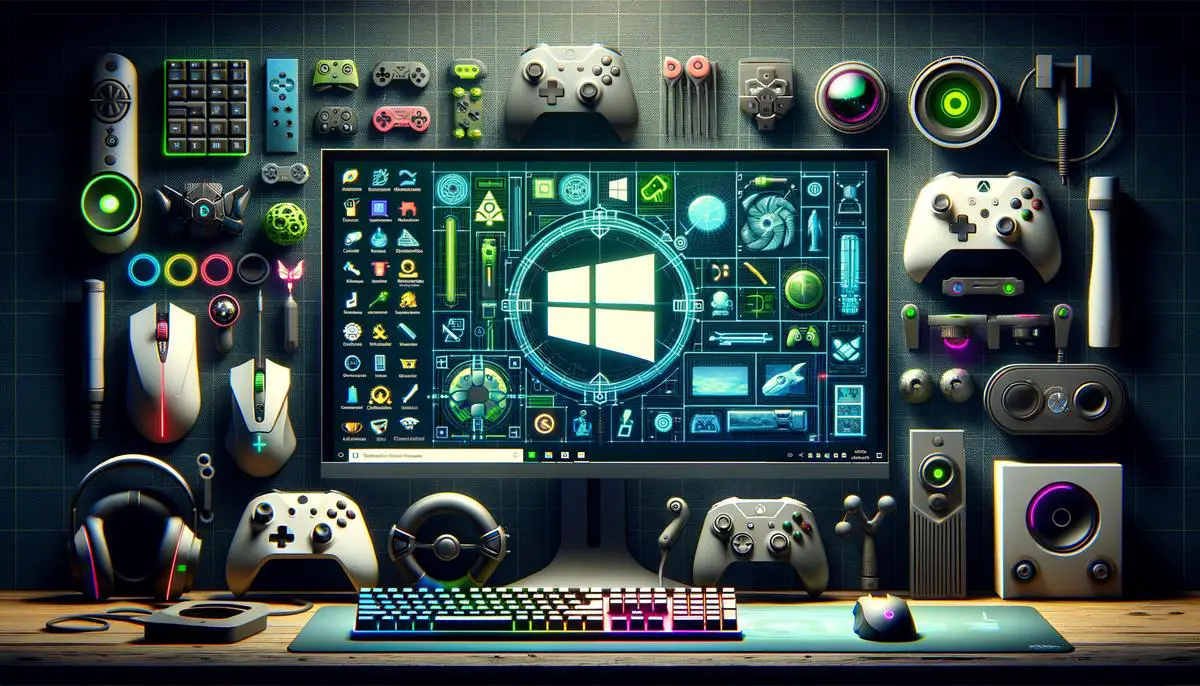
Gaming Performance Benchmarks
Gaming Performance and Experience on Windows 11: An In-Depth Look
When considering the leap to Windows 11 for gaming, performance benchmarks are critical in painting a complete picture. These benchmarks, designed to push systems to their limits, provide valuable insights into how well Windows 11 handles the most demanding gaming scenarios. From frame rates to load times and overall smoothness of gameplay, performance benchmarks serve as a quantifiable measure of gaming prowess. Let’s delve into what these benchmarks reveal about gaming on Windows 11.
First and foremost, gaming performance on Windows 11 is closely tied to Auto HDR support, a feature that automatically enhances the color and brightness range of games. This is particularly noticeable in titles that were not originally designed with HDR in mind. Benchmarks indicate that enabling Auto HDR has a negligible impact on performance while significantly improving visual fidelity. This suggests that gamers can enjoy richer, more vibrant visuals without sacrificing precious frames per second (FPS).
Another area of focus in performance benchmarking is DirectStorage, a technology that leverages the full speed of NVMe SSDs to drastically reduce load times. Benchmark tests show games booting up and loading levels much faster on Windows 11 compared to older operating systems. This is attributed to DirectStorage’s ability to streamline data transfer between storage and GPU, minimizing bottlenecks. For gamers, this means spending less time staring at loading screens and more time immersed in gameplay.
Frame rate comparisons also play a key role in performance benchmarks. Initial reports suggest that Windows 11 offers slight improvements in FPS across a range of titles, especially those optimized for DirectX 12 Ultimate. These improvements are attributed to the OS’s refined resource management and the aforementioned system-wide enhancements, such as better CPU and GPU utilization. While these gains might not be monumental, they are certainly advantageous for competitive gamers seeking every possible edge.
Moreover, Windows 11 introduces features aimed at reducing latency and enhancing responsiveness. Dynamic Refresh Rate and Auto Low Latency Mode, for instance, adjust the display’s refresh rate and reduce input lag, respectively. Benchmarks highlighting these features show a more fluid and responsive gaming experience, which can be pivotal in fast-paced or competitive games.
In addition to raw performance metrics, benchmarks also shed light on the stability and reliability of gaming on Windows 11. Test runs indicate that games tend to crash less frequently and exhibit fewer graphical glitches compared to previous Windows versions. This improved stability not only enhances the gaming experience but also instills confidence in gamers that their sessions will not be interrupted unexpectedly.
The consensus among performance benchmarks is clear: Windows 11 provides a solid foundation for gaming, complemented by slight performance boosts, quicker load times, improved visual quality, and enhanced stability. While the shift to Windows 11 might not revolutionize PC gaming overnight, it lays down the groundwork for future innovations and evolves the gaming experience in meaningful ways. Whether it’s through vibrant HDR visuals, snappy load times, or fluid frame rates, Windows 11 is shaping up to be a worthy platform for the next generation of gaming.
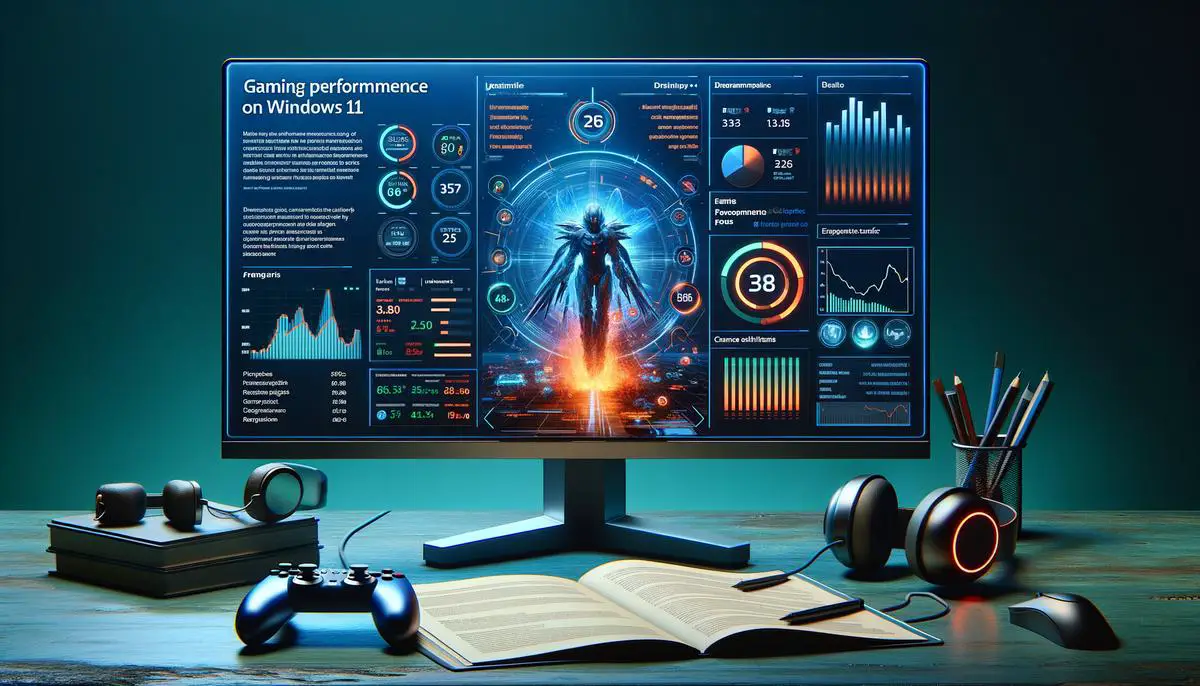
Game Mode and Background Processes
With the focus now turning towards Windows 11’s Game Mode and its effectiveness in optimizing performance, it’s essential to dive into the specifics that cater to delivering a seamless gaming experience. Game Mode is not a newcomer in Microsoft’s operating system lineage, but its integration and optimization in Windows 11 have become a focal point for both casual and hardcore gamers alike. Understanding its role in enhancing gaming sessions requires a detailed examination of its functionality and the real-world impact it has on performance.
Windows 11’s Game Mode is meticulously designed to prioritize gaming applications, ensuring that they receive the lion’s share of system resources. When activated, this feature works in the background to optimize CPU and GPU resources. This means that it intelligently allocates more power to the game you’re playing, while simultaneously scaling back on less critical processes. The intention behind this is clear: to provide a smoother, more consistent gaming experience, free from background computation hitches that can manifest as frame drops or stuttering in your game.
Moreover, Game Mode is particularly adept at managing system memory. By monitoring RAM usage closely, it ensures that your game has enough breathing room, preventing other applications from hogging memory that could lead to decreased performance. This is paramount when running games that are resource-intensive and demand substantial chunks of your computer’s RAM to function smoothly.
The effectiveness of Game Mode extends to the realm of system storage as well. With the assistance of features like DirectStorage, Game Mode can significantly reduce load times by optimizing the way data is transferred between the storage drive and GPU. This results in quicker load times, allowing gamers to immerse themselves into their virtual worlds with less waiting around for maps or levels to load.
In terms of display and internet connection optimization, Game Mode makes marked improvements. For online gaming, it strives to ensure that network resources are appropriately prioritized towards your gaming traffic. This can lead to reduced latency, which is crucial for competitive gaming where every millisecond counts. On the display front, Game Mode works in tandem with Auto HDR and advanced refresh rate features to enhance visual fidelity and maintain fluidity in the visual presentation of games.
Critics and users have provided mixed feedback regarding the tangible benefits of Game Mode. Some report noticeable improvements in frame rates and overall smoothness, particularly in systems that run a multitude of background applications. Others, however, argue that the impact of Game Mode can be minimal, especially on high-end gaming rigs where resources are already abundantly allocated to gaming. The effectiveness can hence be seen as somewhat situational, heavily relying on the specific configurations of hardware and the demand of the games being played.
Despite varying opinions on its effectiveness, the consensus leans towards the utility of Game Mode as a beneficial feature for gamers. Its ability to refine and adjust system resources for optimal gaming performance is particularly useful for those running games on mid-range hardware, or for anyone looking to squeeze out every bit of performance from their system. With continuous updates and improvements from Microsoft, Game Mode remains an essential feature for gamers aiming to achieve the best gaming experience on Windows 11.
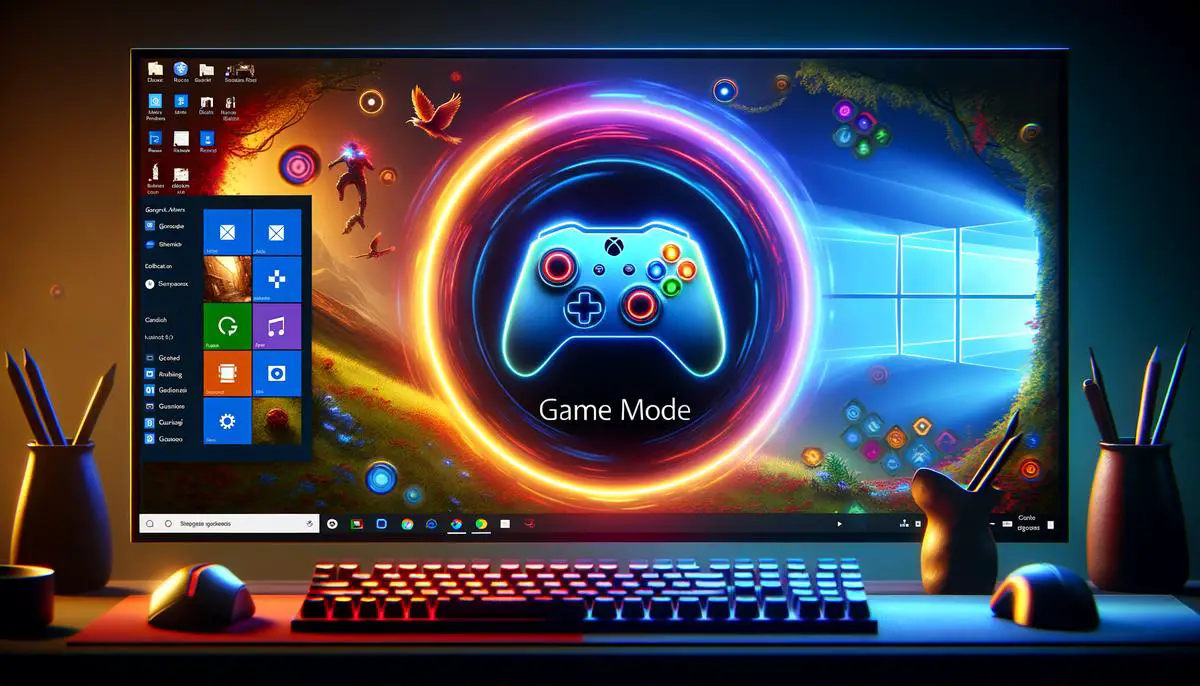
As we’ve navigated through the essentials of gaming on Windows 11, it’s clear that the operating system is not just an upgrade but a gateway to new gaming horizons. The combination of optimal system requirements, DirectX 12 Ultimate, and compatibility with a wide range of gaming hardware sets the stage for unparalleled gaming sessions. Windows 11 is indeed equipped to take your gaming experience to the next level, making every moment spent in the virtual world more immersive and thrilling. With every game played, Windows 11 proves its mettle as an indispensable ally in the quest for gaming excellence.